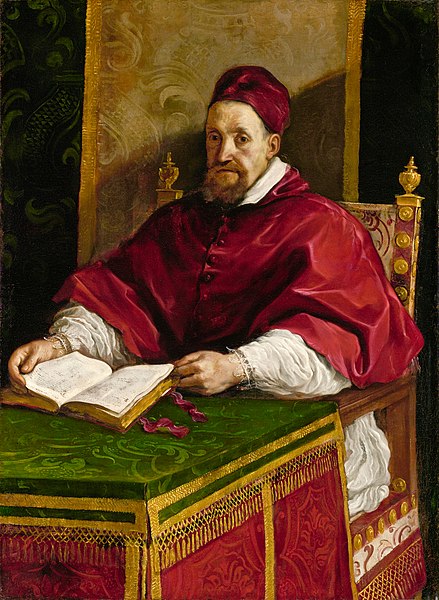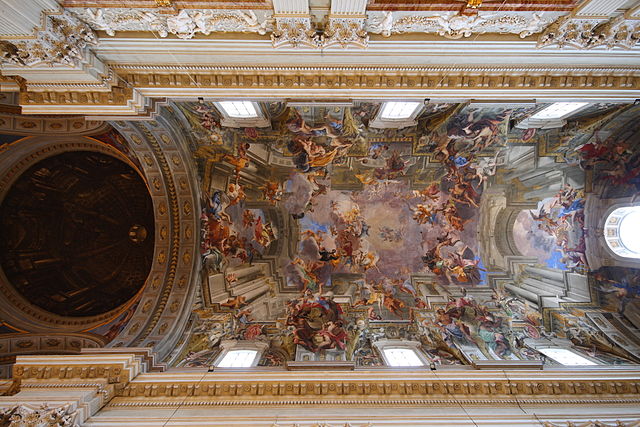Pope Gregory XV, born Alessandro Ludovisi, was the head of the Catholic Church and ruler of the Papal States from 9 February 1621 until his death in 1623. He is notable for founding the Congregation for the Propagation of the Faith, an organization tasked with overseeing the spread of Catholicism and missionary work. Gregory XV was also responsible for the canonization of Saints Ignatius of Loyola, Francis Xavier, Teresa of Ávila, and Philip Neri, which solidified his commitment to the Counter-Reformation.
Portrait by Guercino, 1622 (oil on canvas, Getty Center, Los Angeles)
Bust of Pope Gregory XV, 1621 by Gian Lorenzo Bernini
Pope Gregory XV with his cardinal-nephew of unprecedented income and authority, Ludovico Ludovisi, known as il cardinale padrone
Monument to Pope Gregory XV and cardinal Ludovico Ludovisi in Sant'Ignazio, by Pierre Le Gros the Younger (c. 1709–1714)
The Roman College was a school established by St. Ignatius of Loyola in 1551, just 11 years after he founded the Society of Jesus (Jesuits). It quickly grew to include classes from elementary school through university level and moved to several successive locations to accommodate its burgeoning student population. With the patronage of Pope Gregory XIII, the final seat of the Roman College was built in 1584 near the center of Rome's most historic Pigna district, on what today is called Piazza del Collegio Romano, adding the church of St. Ignatius in 1626, and a renowned observatory in 1787. The college remained at this location for 286 years until the revolutionary Capture of Rome in 1870.
The facade of the Roman College
Roman College.
A fresco in the Roman College.
The ceiling fresco of Sant'Ignazio Church.








